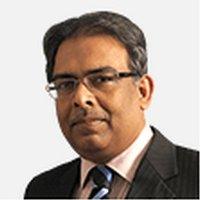Coronavirus update: India is facing a 'severe, intensive' second wave
- Published

The surge in reported infections has been staggeringly high
By the middle of February, health workers at an expansive hospital in western India were beginning to believe that the coronavirus pandemic's deadly surge was rapidly easing.
There were only 28 patients in the Covid-19 ward of the 1,000-bed non-profit Kasturba Hospital in Wardha, Maharashtra - down from 180 patients at the peak of the pandemic last summer. The intensive care unit (ICU) was empty for the first time in months.
A third of the 300 beds in the Covid-19 ward had been moved out to other wards to accommodate patients suffering from other diseases. There had been a sharp drop in reported infections countrywide and Wardha was no exception. In most cities, life was returning to normal. Healthcare workers and frontline staff had begun receiving jabs of the coronavirus vaccine.
At the Kasturba Hospital, health workers had endured a gruelling year - as many as 70 of them had been infected by the virus, and many others had suffered crippling fatigue and burnout.
But the sense of relief among the 650 doctors and nurses turned out to be cruelly short-lived.
"Our celebrations were premature," Dr SP Kalantri, medical superintendent of the hospital, told me.
India's second wave has not spared this hospital, some 50 miles (80km) south-west of Nagpur, one of India's worst-hit cities.

The Covid-19 ward, with its 100 fewer beds, is again filling up fast - 170 patients have been admitted in the last couple of weeks, and the 30-bed ICU is packed to the brim with very sick patients. Deaths are climbing.
"The virus seems to have become more transmissible in the second wave. We are admitting entire families who are infected. We are also seeing a lot of young people, aged below 40, getting sick," says Dr Kalantri.
"Here we go again. The situation is alarming."
India's tally of recorded coronavirus cases exceeds 12 million, the third-highest in the world behind the US and Brazil. It has reported more than 160,000 deaths from the infection but the case fatality rate or CFR, which measures deaths among Covid-19 patients, is among the lowest in the world.
How deadly is the second wave?
Many experts believe India is facing the threat of a devastating and deadlier second wave of the virus.
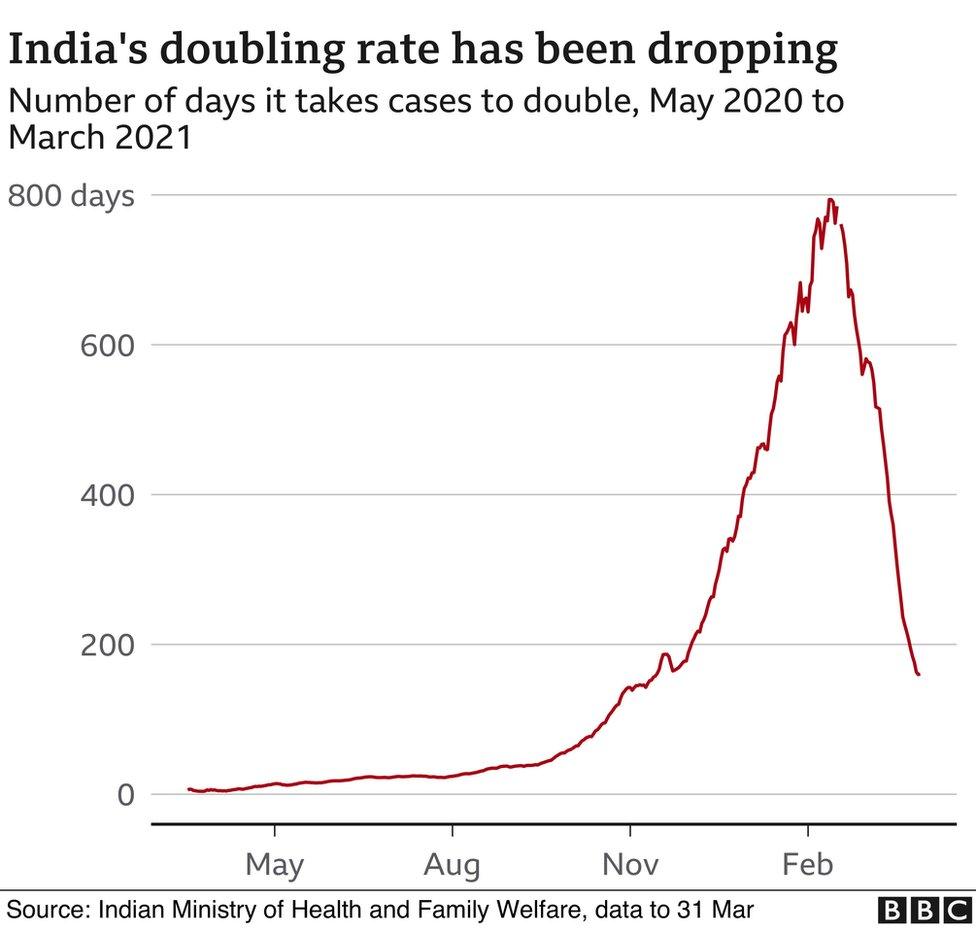
The doubling rate of infection - or the amount of time it takes for the number of coronavirus cases to double - was down to less than 170 days on 30 March, from a high of 590 days on 28 February. The last time infections were doubling in less than 170 days was in November.
More than 68,000 cases were reported on Monday, the most in a day since October.
How different is the second wave?
Dr Murad Banaji, a mathematician at Middlesex University London who is closely tracking the pandemic, says the last time infections grew this rapidly was last May. But the daily caseload numbered a few thousand then - not 55,000, the current average.
Testing is higher now, and detection is likely to be better in many parts of India. "But that doesn't itself explain the speed of rise," he told me.
The surge has been pronounced in Maharashtra, which accounts for 60% of India's active cases. But, as Dr Banaji points out, the rate of increase is high in almost all states.
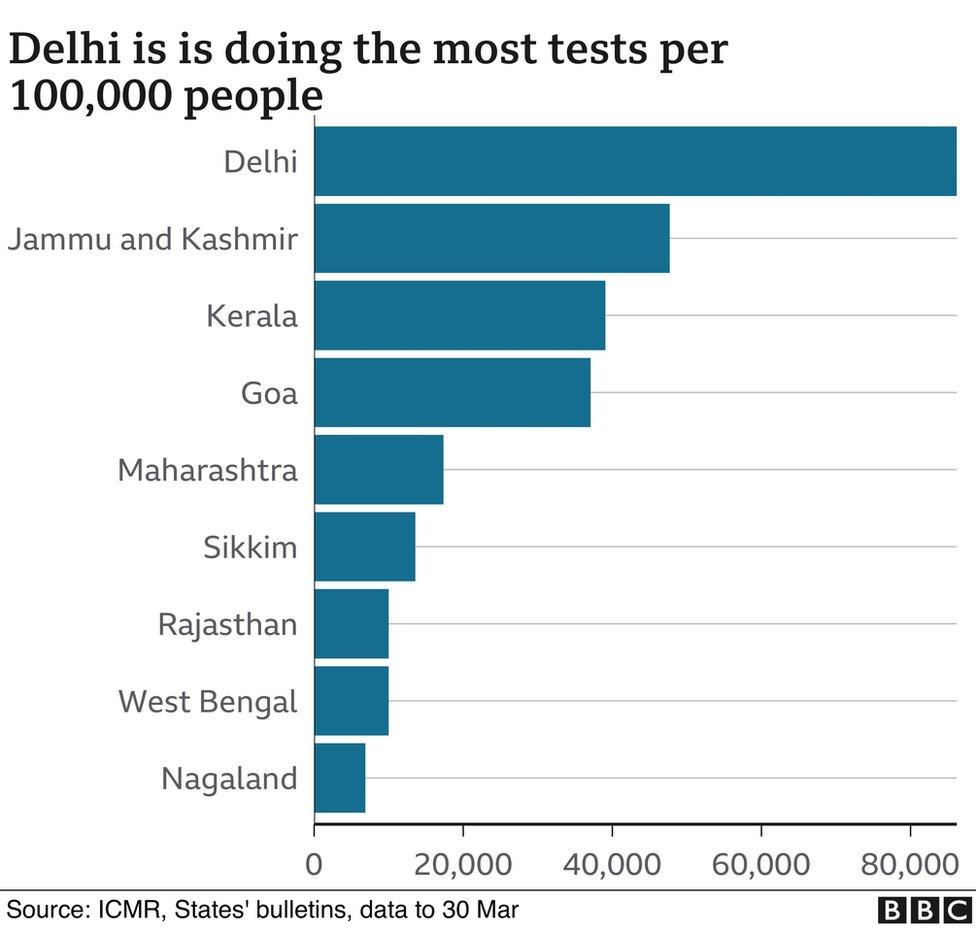
And "something unprecedented" has been happening in the last two weeks: every state that is reporting more than 100 cases - with the sole exception of the southern state of Kerala - has seen cases rising fast. They are "rapidly growing epidemics" in states where testing rates are lower, leading to weaker detection, he says.
What is fuelling the second wave?
Experts believe that India's second wave is being fuelled by people being less cautious - and mixed messaging by the government.
After being cooped up in their homes for nearly a year, many Indians have begun congregating at crowded weddings and family functions without taking precautions.
"It is behavioural fatigue. This has led to a dangerous form of fatalism, and the propensity to take risks," Dr Kalantri says.
On Tuesday a senior official sounded the alarm, saying that India was "facing a severe, intensive situation and the whole country is potentially at risk".
But experts say the government itself must take its share of the blame for allowing reckless behaviour in the population.
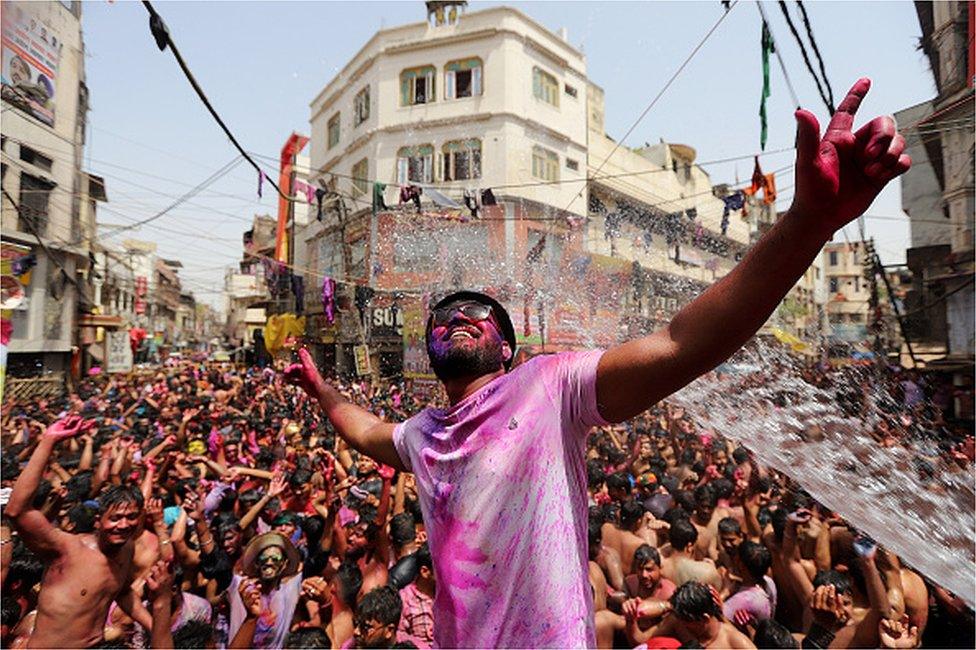
Mass gatherings at festivals like Holi could easily lead to a spike in infections
Prime Minister Narendra Modi has spoken about the need to rein in infections or risk a "nationwide outbreak", external. But no restrictions have been placed on unfettered political campaigning - India is in the middle of five key state elections - which are attracting top leaders and massive crowds. And in recent weeks, religious gatherings, festivals and cricket games drawing tens of thousands of mostly unmasked people have been allowed.
"What worries me most is people who took the highest levels of precaution have thrown caution to the winds, so there is this unexposed 'pristine prey' for the virus," says Bhramar Mukherjee, a professor of biostatistics and epidemiology at the University of Michigan.
But this may not be telling us the whole story.
Although India is still denying that the surge is connected to variants of the coronavirus detected in the population, many experts believe that new variants, including the highly transmissible UK one, may be playing a role.
Sero-surveys - studies that pick up antibodies - have shown that a high fraction of people living in Mumbai, Pune and Delhi, have had the disease. So why are these cities showing such a sharp uptick in infections?
"We have to wonder whether they are variants in widespread circulation, which are more transmissible or more capable of bypassing immune defences built up after earlier infection," says Dr Banaji.
How long could this second wave last?
Experts believe this will be a long haul.
Several states are seeing exponential growth in cases.
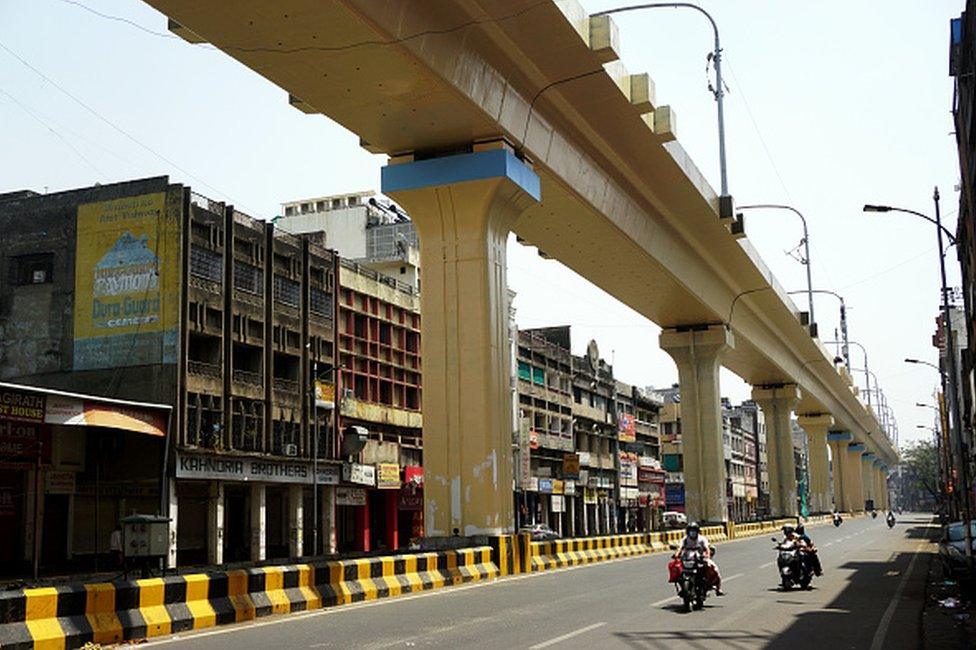
Nagpur, one of the worst-hit cities, had to enforce a lockdown to contain the spread of the virus
In some, like Maharashtra, Gujarat and Punjab, cases have already surged to close to or above their previous peaks.
Others such as Andhra Pradesh, Bihar, Uttar Pradesh and West Bengal seem to be at an earlier stage in their surges.
But if cases continue to rise at current speeds and surpass previous peaks, then the country as a whole will see a national peak considerably higher than the first one, according to Dr Banaji.
The hope is that vaccinations will play a part in controlling the wave.
But the current pace of vaccination - more than 50 million doses administered in a little over two months in a country with a population of over 1.3 billion - is "going to have little effect on slowing spread of the virus in a month or two," says Dr Banaji.
Should India take comfort in the 'low' death rate?
Doctors say fewer people have been dying of the disease in the second wave, largely due to improved and more efficient clinical management of the disease.
Dr Mukherjee says she never tires of reminding people that even with a 0.1% infection fatality rate, if you let the virus run wildly, you are looking at more than half a million reported deaths. Put simply, more infections would inevitably mean more deaths.
"Are we okay with sacrificing another half a million lives and still feeling content that the fatality rate is low?"
Also, she says, the more you let the virus spread the more chances of the virus mutating.
"Discussing a low death rate is wishful thinking now," Dr Banaji says.
What should India be doing?
Experts believe India should step up genomic surveillance to track down variants and ramp up vaccination in areas of high transmission and in states where elections are being held to prevent the virus from spreading.
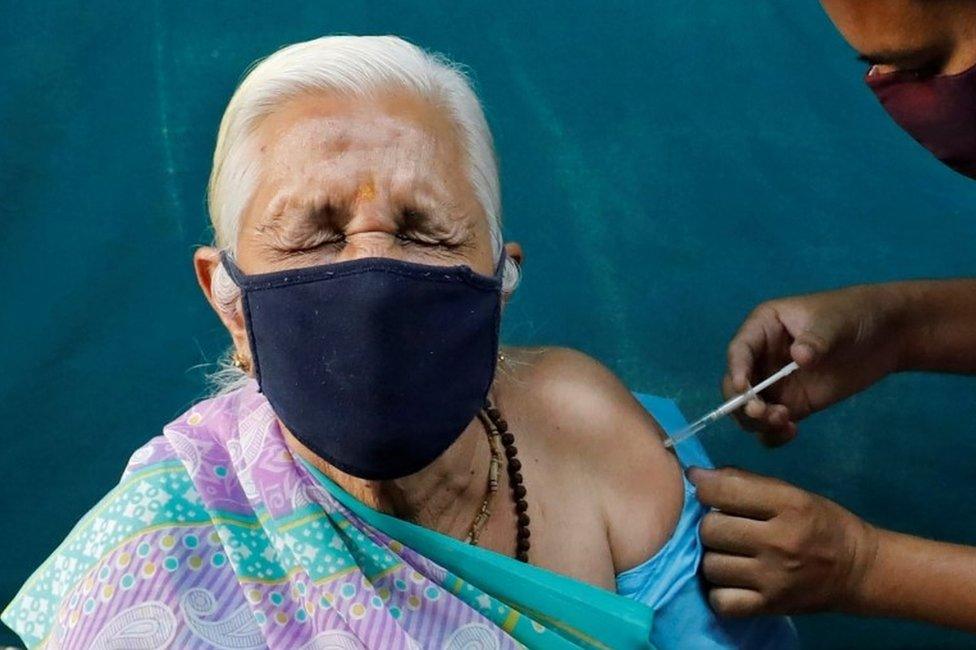
Experts say India needs to ramp up its vaccination drive
Also, states most affected by the last wave should be targeted as immunity of the population may be waning.
Lockdowns may be needed in areas of very high transmission if the health system is overwhelmed. And governments have to act fast and ahead of time, as hospitalisations and deaths from Covid are lagged.
"I do feel frustrated that India did not roll out the vaccination drive more aggressively while the curve was in its valley," says Dr Mukherjee.
"It is much easier to roll out vaccination when the infection is not so high. Now the healthcare capacity is stretched between vaccination and Covid care."

Why do new variants of Covid-19 keep appearing? BBC's health reporter Laura Foster explains

Related topics
- Published25 March 2021
- Published10 March 2021
